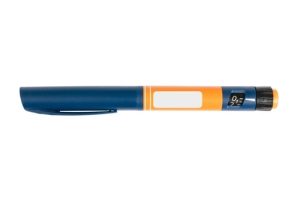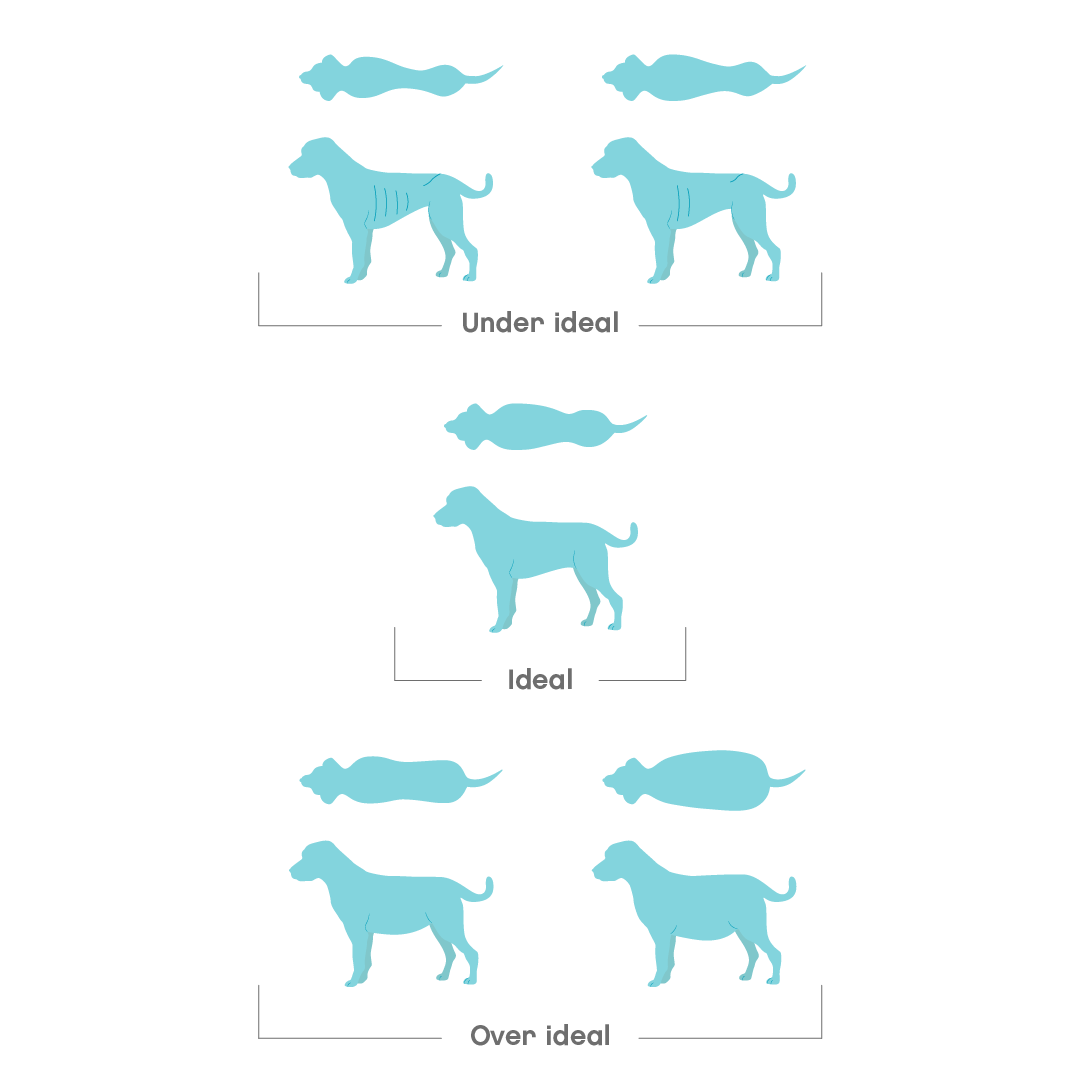Having diabetes means your dog can’t control the levels of sugar in their blood. It’s a common illness in dogs, affecting around 1 in 300 of the population. Diabetes can happen in dogs of any age, sex or size. But it’s most likely in dogs over 5 years old, unneutered females and certain breeds.
Dogs with diabetes have lots of sugar in their blood. But their body can’t use it. They don’t have enough of a hormone called insulin. There isn’t a cure for diabetes. And untreated or uncontrolled diabetes causes life-threatening illness. But treatment with insulin controls the condition. Your diabetic dog can enjoy a full and active life with daily insulin injections. Early identification and treatment ensure the best outcomes for dogs with diabetes.
Overview
What is diabetes in dogs?
There are two sorts of diabetes in dogs:
- Diabetes mellitus or ‘sugar diabetes’ – a relatively common illness in dogs.
- Diabetes insipidus or ‘water diabetes’ – a rare brain illness that causes increased drinking and peeing in dogs.
The term ‘diabetes’ usually means diabetes mellitus. This article looks at diabetes mellitus in dogs.
Diabetes- how does it happen?
- All of the cells in the body use glucose as fuel to work.
- When the body needs more fuel we get hungry. So they eat and their blood sugar levels rise.
- Insulin is a hormone that helps glucose get from the bloodstream into the cells.
- In diabetes, there isn’t enough insulin to move glucose across into the cells. Or the cells themselves can’t respond to insulin. Either way, glucose stays in the blood.
- Glucose levels in the blood get higher, but the body still needs fuel.
- Hunger increases but eating more doesn’t help. So the body starts using its own fat and muscle to try and provide fuel.
Insulin comes from special cells called ‘Islet cells’ in your dog’s pancreas. The pancreas is a small gland in your dog’s tummy.
There are two main types of diabetes:
Type 1 diabetes
- The most common type of diabetes in dogs
- Insulin-dependent diabetes: the pancreas produces too little insulin.
- The body’s own defence system attacks the pancreas by mistake and destroys the Islet cells.
- Insulin levels drop and blood glucose rises
Causes of Type 1 diabetes in dogs:
- Usually an inherited (gene) defect.
- Rarely, recurrent bouts of pancreatitis can lead to diabetes in dogs.
Type 2 diabetes
- Less common in dogs (in contrast to humans):
- Insulin-resistant diabetes: the body can’t respond properly to insulin that’s produced OR
- There’s not enough insulin to meet abnormally-high demand
Possible causes of Type 2 diabetes include
- Other illnesses: Cushings disease
- Certain medications: steroid hormone injections or tablets
- Obesity: Lots of fat in the blood and inside cells interferes with response to insulin
Complications of diabetes mellitus in dogs
Untreated or poorly controlled diabetes leads to diabetic ketoacidosis (DKA). This is a much more severe and life-threatening illness.
On the other hand, having too much insulin for the amount of sugar in the blood can lead to dangerously low blood sugar levels, called hypoglycaemia.
Symptoms
Symptoms of diabetes in dogs
Dogs with diabetes have lots of sugar in their blood, but it stays there. Trapped. And if this goes on for any length of time, rising blood sugar and lack of essential energy inside cells leads to all the symptoms of diabetes.
- Drinking more
- Peeing more
- Losing weight and muscle
- Eating more
- Sleeping more

Risk
Which dogs have a greater risk of developing diabetes?
Although any dog can develop diabetes, certain factors increase risk:
- Age: dogs aged between 5 and 12 years
- Certain breeds: Beagles, Poodles, Samoyeds, Border terriers, West Highland white terriers, Cairn terriers, Bichon frise, Tibetan terriers
- Sex: Being female and unspayed (not neutered)
- Having other illnesses: chronic or recurrent Pancreatitis, Cushing’s disease (hyperadrenocorticism)
- Taking certain medications: steroid hormone treatments for behaviour or skin problems
- Obesity: dogs who are prone to obesity are also prone to diabetes. The two often occur together
(Certain breeds also seem less likely to get diabetes, including German Shepherd dogs and Boxers)
Other health risks for dogs with diabetes mellitus
- Cystitis: Sugar in urine encourages bacteria to multiply. This causes bladder infection and inflammation.
- Going blind: Dogs with poorly controlled diabetes develop cataracts.
- Recurrent or repeated infections: Having diabetes weakens your dog’s immune system. So they’re more likely to get urinary tract and skin infections and dental disease.
Are my other pets or family at risk?
- Diabetes affects individual dogs. It won’t spread to other animals or humans.
- Dogs in the same household with the same risk factors will be equally at risk of diabetes.
Diagnosis
How do vets diagnose diabetes in dogs?
Vets usually diagnose diabetes in dogs based on the following:
- History: Changes and problems you report, including other illnesses and treatments.
- Physical exam: checking body condition, clues to underlying illness, eye exam (cataracts).
- Urine tests: Using a special test strip to detect how much glucose is present. The same strip also detects ketones, which are a sign of severe or poorly controlled diabetes.
- Blood tests: glucose and fructosamine (a chemical that tells how well glucose levels were controlled in the previous month).
Vets diagnose and manage diabetes based on all of the above. No single test provides a definite answer.
Vet treatment
What’s the treatment for diabetes in dogs?
Dogs with diabetes need insulin injections every day for life. Treatments (pills) given by mouth for diabetes don’t help diabetic dogs. Treating diabetes in dogs is a major commitment for owners. So it’s important that you understand what’s involved from the beginning. Your vet can help with this.
The treatment goals for diabetes in dogs:
- Controlling or preventing symptoms.
- Maintaining healthy weight and appetite.
- Helping your dog and you to continue to exercise, play and enjoy life together.
Treatment for diabetes – what’s involved?
- Insulin injections every 12 hours to control blood glucose.
- A blood glucose curve: helps your vet work out the dose of insulin that your dog needs to control their symptoms.
- Diet planning and managing body weight.
- Antibiotics if infections are present.
Giving insulin injections to your diabetic dog:
- If your dog has diabetes, you’ll need to give them their insulin injections.
- Your vet or vet nurse will show you how to do it and help you until you feel confident.
- Pre-set insulin injector pens are available. These are easier to use than an injection and give a reliable dose. But they’re also going to be more expensive.

- Insulin pen
Costs of treating diabetes in dogs
Diabetes requires lifelong treatment. Over the years, there will be lots of ongoing costs:
- Medication: insulin.
- Syringes and needles.
- Vet checks every 3-6 months.
- Regular blood and urine tests for monitoring control.
- Possible additional checks and hospital treatment for complications or changes in insulin requirements.
Diabetes is a lifelong condition and treating it will be expensive over your dog’s lifetime.
Home treatment
Caring for a dog with diabetes at home
Caring successfully for your diabetic dog means keeping to a regular routine of feeding, insulin treatment and exercise.
- Ensure your dog gets their insulin injections every 12 hours at the correct dose and time.
- Feed a prescription diet for diabetes, such as Hills Prescription Diet w/d – constant access to dry food helps to even out blood sugar levels throughout the day and prevent glucose levels from dipping between meals.
- Keeping your dog slim makes control easier. Check their weight regularly.
Body Condition Scoring (BCS) in dogs
Body Condition Score (BCS) is a scale that gives a practical evaluation of the fat coverage of your dogs body. By checking how easy or not it is to feel certain bony areas of the body, a score is then produced. There are several scales, from 1 to 5 or 1 to 9. The ideal body condition lies in the middle, so either 3/5 or 5/9.
The body areas normally checked for fat coverage are:
1. ribs and spine
2. hips and shoulders
3. waist

Here are a few tips on how to do it.
With your pet in a standing position:
- Place your hands on the rib cage and gently feel for each rib, without pressing too hard
- Feel the waist and look from the top and the side (if you have a very furry breed, it may be harder to assess)
- Feel the spine, which runs down the middle of the back
- Feel the top of the hips and shoulders
- Keep up to date with preventive care, like vaccination, worming and flea treatment.
- Identify and treat other health problems promptly.
- Attend regular check-ups with a vet to make sure that the diabetes is under control
- Always carry something sugary with you on walks and keep something handy in the house in case of emergencies. Runners’ dextrose and electrolyte solutions are readily-available in chemists and shops.
It’s a good idea to keep a diary of medication, feeding and behaviour and review it every week.
Monitoring your diabetic dog at home
Sometimes your vet may suggest checking your dog’s diabetes control at home. This includes:
- Testing urine: Collecting a clean sample of your dog’s pee and checking for glucose and ketones with the special test strips.
- Blood testing: it’s possible to test your dog’s glucose at home. Your vet practice will show you how to take a small blood sample from your dog’s ear. Simple blood glucose monitors (glucometers) are available at chemists for human diabetics. Not every dog will tolerate this at home. They may need to have all their checks carried out at a vet practice instead.
- Continuous glucose monitoring: Using a new device which stays on your dog for up to 2 weeks. It monitors the glucose levels in fluid just under your dog’s skin. It’s painlessly attached by your vet and is ideal for stress-free monitoring any time of day.
Caring successfully for a diabetic dog is a big commitment. Talk everything through with your vet before starting your dog’s treatment. It’s much better to raise any concerns openly at the outset and to ask for help or guidance.
Quality of life
Most dogs live a full happy life on insulin treatment. But not all respond so well. And serious complications, like diabetic ketoacidosis, are more likely as they get older and develop other illnesses. If diabetes can’t be effectively controlled for any of these reasons, your dog’s health will progressively worsen. You may find yourself wondering if they are enjoying life any more.
Joii’s Quality of Life assessment tool can help to assess this.
Prevention
Can diabetes in dogs be prevented?
Some breeds have an inherited risk of diabetes, which can’t be prevented.
However, obesity predisposes all dogs to diabetes.
Reduce your dog’s risk of diabetes by:
- Feeding a well-balanced diet, appropriate to their age and lifestyle
- Maintaining a healthy weight for your dog with regular exercise
- Avoiding sugary and high-fat human treats and dog chews
- Neutering (spaying) female dogs reduces risk of diabetes triggered by hormonal changes after a season.
When to worry
When to worry about your diabetic dog
Diabetes mellitus is a serious health condition, requiring careful treatment and monitoring.
Diabetic ketoacidosis and hypoglycemia are both life-threatening complications of diabetes. Both can come on very quickly.
Contact your nearest vet without delay if your diabetic dog is:
- Vomiting and dehydrated
- Not eating
- Staggering or looking drunk
- Collapsed or fitting
Call a practice vet if your dog is:
- Drinking and peeing (urinating) more than usual
- Losing weight but eating more
- Has sweet-smelling breath or pee
- Becoming more tired on walks
Joii can help with advice on:
- Recognising symptoms of diabetes
- How to care for a diabetic dog at home
- Choosing the best diet for your dog
- Managing weight loss and exercise








